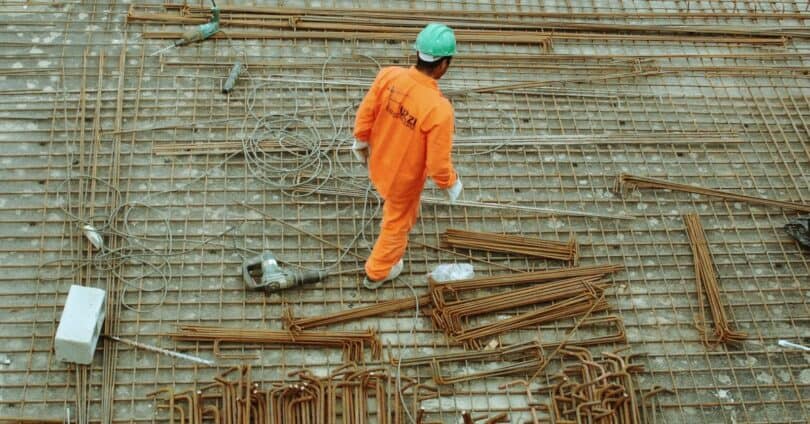In roles requiring independent onsite operations – from security guards to home repair technicians – employees need more safety backup from coworkers. Isolated conditions introduce risks that diligent lone worker safety programs and innovative devices now aim to mitigate.
Understanding the Lone Worker Landscape
Whether conducting exterior patrols or servicing equipment in confined spaces, employees traversing sites face amplified uncertainties compared to team settings. Potential risks faced by lone workers include:
Physical Harm
Assault, confrontations with trespassers, or attempted thefts put lone staff in harm’s way, especially those carrying valuables or occupying remote posts late at night. Women additionally face sexual assault dangers.
Environmental Hazards
Inadvertent slips, falls, entrapments, exposures to hazardous materials, and even encounters with wildlife constitute unpredictable environmental risks faced by solo workers across field, maintenance, and construction sectors.
Medical Emergencies
Sudden injuries, heart attacks, seizures, or diabetic complications can strike anyone at any time. But without coworkers nearby to assist and alert emergency responders, health events become intensified threats should lone workers lose capacities to call for help themselves.
Psychological Stress
Social isolation, perceived lack of organizational support, and constant vigilance against danger compound job strain for lone staffers – contributing to anxiety, depression, fatigue, and concentration lapses that undermine both safety and job execution.
The Rise of Lone Worker Safety Devices
In response to escalating lone worker hazards across virtually all industries, a wave of innovative solutions now provides protective support systems using cloud-based platforms configurable to unique operational needs.
Here are some key functionalities these lone worker safety devices deliver:
Man-Down Detection
Using smart wristbands, belt clips, or lanyards equipped with accelerometers, movement patterns instantly trigger alerts should a staffer collapse or remain horizontal for unusual durations, indicating distress.
Environmental Monitoring
Gas detectors, thermometers, noise measurement, and other integrated environmental sensors enable real-time tracking of ambient working conditions – triggering alerts when thresholds exceed safe parameters.
GPS Tracking
Built-in GPS transmitters pinpoint the exact locations of remote workers while mapping software traces movements – quickly dispatching assistance should distress signals activate. Historical data also improves coordination.
Two-Way Communication
With voice-command capabilities enabling instant talk functionality between monitoring response teams and staffers requiring aid, two-way vocal communication integration streamlines verification and dispatch coordination.
Biometric Monitoring
As wearables integration advances, devices now provide detailed biometric feedback – continuously tracking heart and respiratory rates, skin temperatures, blood oxygen levels, and more to assess staffer well-being over the shift.
Benefits of Implementing Lone Worker Safety Devices
The advantages of implementing lone worker safety devices extend far beyond emergency response. These solutions offer tangible benefits for both employees and employers:
For Employees:
Lone workers gain immense advantages from devices offering discreet preventative support should threats emerge in isolation. More than just minimizing harm, these solutions also foster positive improvements across safety, health and performance metrics – creating mutually beneficial value for both employees and the organizations seeking to support them. Specific benefits include:
Enhanced Safety
Discreet panic buttons, man-down alerts, and two-way vocal connections provide immediate backup support should any threats emerge while working alone – giving staffers confidence to focus fully on serving client needs.
Improved Well-Being
Environmental monitors safeguard health, while biometric tracking by wearables keeps staffers attuned to their own stress signals and fatigue onset – allowing self-regulation to sustain safety and productivity peak performance all shift long.
Increased Productivity
Reducing worries about “what if” emergency scenarios through reliable safeguarding tech allows staff to fully apply expertise to the quality execution of tasks, improving productivity metrics over time.
For Employers:
Beyond fulfilling ethical imperatives to safeguard vulnerable workers, business leaders implement lone worker safety devices, also recognizing tangible benefits impacting risk management, coordination, compliance, and data-informed strategy. Executives seeking both optimal worker assurance and operational excellence pursue these solutions, realizing advantages such as:
Reduced Risk and Liability
Comprehensive lone worker safety protocols demonstrate stringent organizational duty of care – proving due diligence to help mitigate liability should incidents involving lone staffers occur despite preventative measures.
Improved Compliance
Documented utilization of available protection technologies ensures alignment with Health and Safety Executive (HSE) laws and industry standards governing lone worker risk management across sectors to avoid non-compliance fines.
Enhanced Coordination
Tracking apps foster better dispatch coordination and prompt emergency response while also logging accurate hours worked and geo-routes covered to optimize schedules and caseload balance.
Valuable Data Insights
Aggregated data reveals patterns indicating environmental areas requiring remediation or especially hazardous routes to guide future risk elimination efforts for continual optimization of safety programs.
Industry Applications of Lone Worker Safety Devices
The applications of lone worker safety devices span across nearly every industry, including:
Security
Unarmed guards conduct overt and covert surveillance without partner backup. Discreet devices allow for maintaining cover while ensuring backup response should adversaries strike.
Maintenance and Repair
Technicians fixing equipment in confined spaces or conducting rounds risk environmental and physical harm without support staff present. Connected device integration bolsters productivity.
Transportation and Logistics
Drivers covering vast distances traverse restless roads and delivery sites alone. Automatic assistance coordination provides security should accidents or criminal threats arise.
Healthcare
Home health aides and hospice staff entering private residences remain isolated, with patients posing unpredictable behavioral risks warranting monitoring.
Construction and Utilities
Personnel traversing multiple remote work zones benefit from coordination support to mitigate a wide spectrum of environmental and mobility-related risks impacting such transient roles.
Regulatory Landscape and Compliance
Across sectors, Health and Safety Executive (HSE) regulations backed by Federal laws mandate employers provide “suitable and sufficient” risk assessment and safety management specifically addressing hazards impacting lone workers. Compliance demands align protective protocols on par with standard team settings. Integrating smart lone worker safety devices provides a data-verified implementation trail evidencing regulatory adherence.
Ultimately, no laws eclipse the moral imperative to safeguard employees as if they were family. Lone worker solutions deliver the organizational reach to fulfill such covenants of care – sensing risks many managers cannot witness firsthand.
Conclusion
As amplified uncertainties surround solo operations, innovative safety devices tailored to lone workforces provide preventative support while capturing data documenting regulatory compliance. Workers gain tools to quell fears. Management obtains insights to guide safety program advancement. And organizational cultures committed to worker well-being improve retention and communities. The future of work may unfold remotely, but it can unfold independently. Lone worker safety devices help businesses coordinate continuity even when supervisors cannot hover at employees’ sides. Today, technology shepherds the flock.









